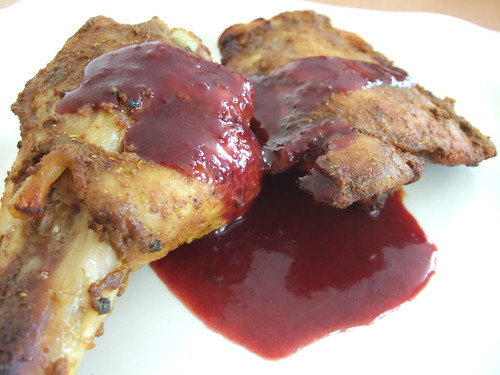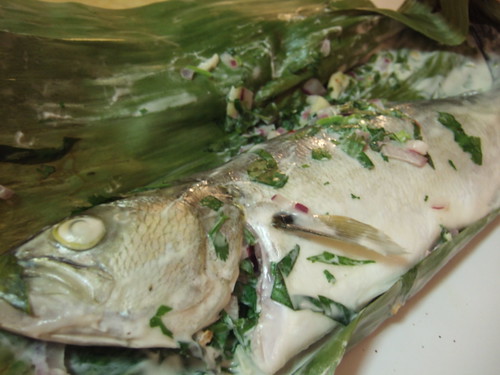I’m still in shock when I find that most of the ingredients I need for a certain recipe is already in our kitchen. That’s the good thing with store-bought spices: you only have to buy them once in a while because you can store them for up to a year. For this one, all I had to do was buy the chicken, the yogurt and a couple of peaches. I used the blackberries I picked from North Fork after our trip to Montauk. They were in a Tupperware inside the fridge, but even after a few weeks, they were still good to go.
All I really wanted was to use the blackberries before they went bad. I found this chutney recipe online and thought of matching it with pork chops because of the cherry chutney I made earlier this season. But then something Indian-spiced came to mind after I bought several lamb pieces from the Halal store around the corner.
Ingredients:
8 chicken breasts and legs, skinned
1 cup of nonfat Greek yogurt
1 onion, chopped
2 tbsp cumin seeds, toasted, ground
2 tbsps paprika
2 tbsps garam masala
2 tbsps turmeric
2 tbsps cardamom, ground
2 tbsps cayenne pepper
salt, pepper, oilFor the peach-blackberry chutney:
1 cups of blackberries
2 peaches, peeled, seeded, diced
1/4 cup brown sugar
1/4 cup cider vinegar
1 onion, chopped
2 coves of garlic, minced
1 small knob of ginger, peeled, chopped
1 small jalapeño, seeded, chopped
salt, oil1. Make the marinade by mixing all the spices and yogurt together in a bowl large enough to fit all the chicken. Add the chicken pieces and make sure the marinade covers them all. Marinate for at least 2 hours in the fridge.
2. Make the peach-blackberry chutney. In a saucepan, heat some oil and sauté the onions and the garlic. Add the jalapeño and ginger and sauté a few minutes more. Add in the cinnamon, vinegar, brown sugar and peaches. Keep sautéing until the peaches are soft. Add blackberries. Cook, stirring occasionally and crushing the fruits with the back of a wooden spoon. Turn off the heat and let cool. Strain to a container and serve with tandoori chicken.
Related post/s:
Make your own garam masala
Crispy okra is great as a side dish
How about some tandoori lamb chops?
You can make chutney with cherries







